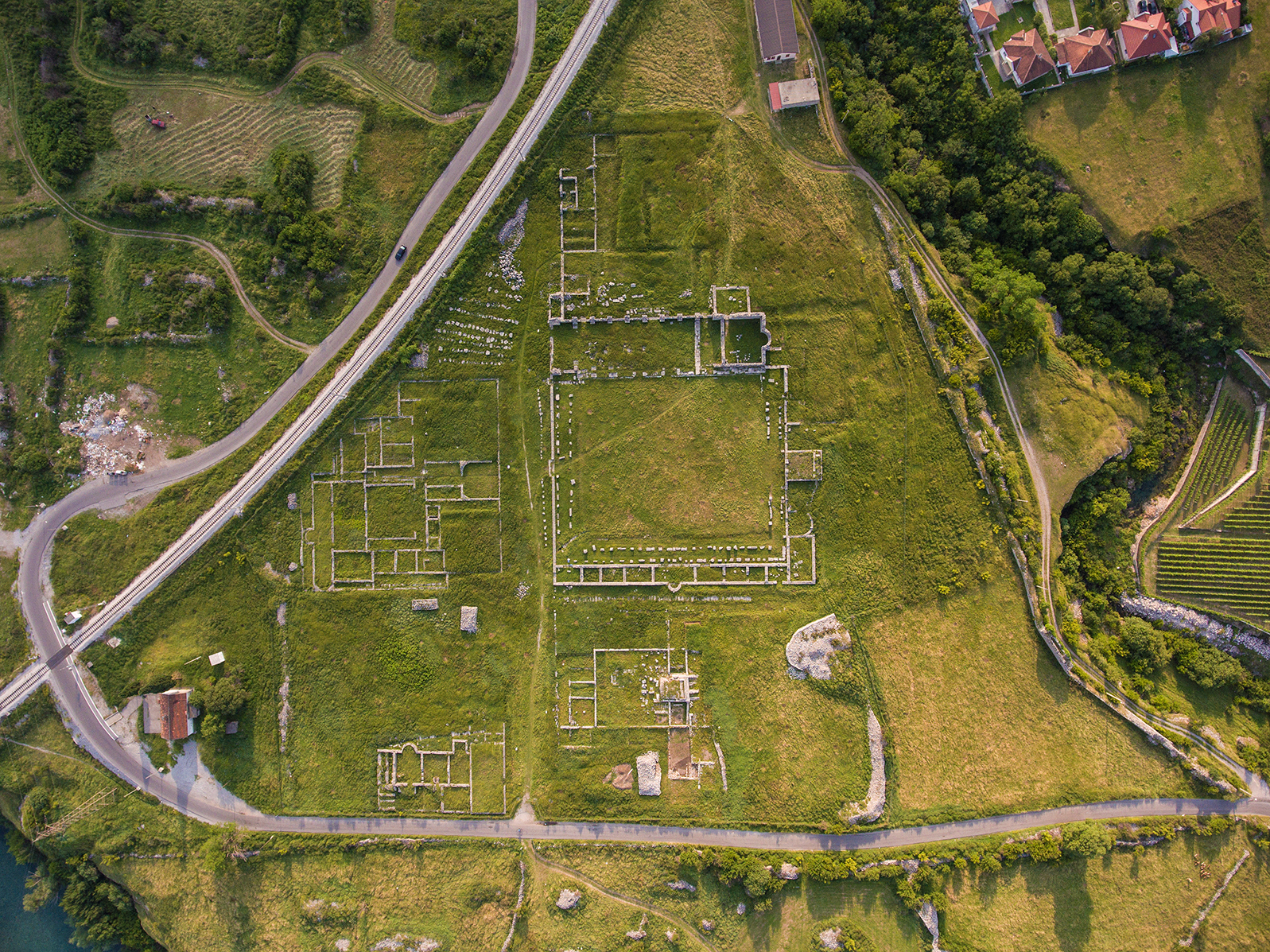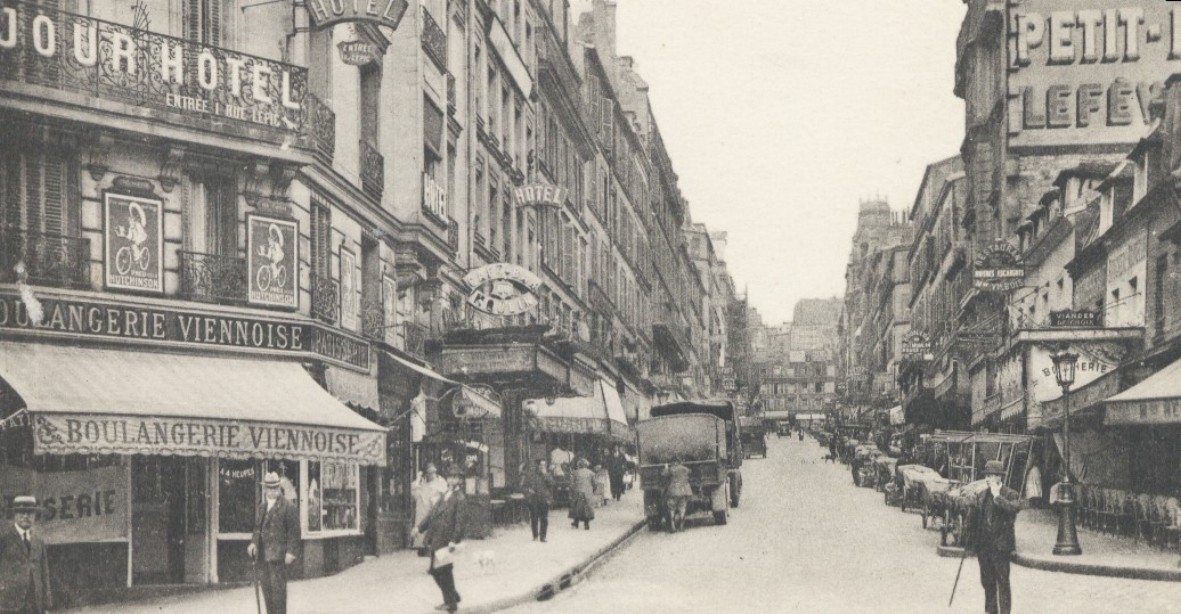|
Danica Đurović
Danica Đurović (1925 – 2001), sometimes Danja, was a Montenegrin painter. Born in Cetinje, Đurović was first educated at the Academy of Applied Arts at the University of Zagreb, the art school of Herceg Novi, and the Pedagogical Academy in Nikšić; her first career was as a teacher. She took painting lessons in the studio of the Ministry of Culture in Cetinje, and later worked with Milo Milunović in his studio. Milunović influenced her early choice of subjects, such as still lifes, but she soon moved in a more expressionistic direction stylistically. This phase concluded with a further turn towards abstraction, in which recognizable forms are simplified and rearranged. She returned to early themes in her later painting. Đurović is represented in the collection of the Art Museum of Montenegro. She died in Podgorica Podgorica ( cnr-Cyrl, Подгорица; ) is the Capital city, capital and List of cities and towns in Montenegro, largest city of Montenegro. The city ... [...More Info...] [...Related Items...] OR: [Wikipedia] [Google] [Baidu] |
Cetinje
Cetinje ( cnr-Cyrl, Цетиње, ) is a List of cities and towns in Montenegro, town in Montenegro. It is the former royal capital ( cnr-Latn-Cyrl, prijestonica, приjестоница, separator=" / ") of Montenegro and is the location of several national institutions, including the Blue Palace, official residence of the president of Montenegro. According to the 2023 census, the town had a population of 12,460 while the Old Royal Capital Cetinje, Cetinje Municipality had 14,465 residents. Cetinje is the centre of Cetinje Municipality. The city rests on a small karst plain surrounded by limestone mountains, including Lovćen, Mount Lovćen, the legendary mountain in Montenegrin historiography. Cetinje was founded in the 15th century and became a cradle of the culture of Montenegro. Its status as the honorary capital of Montenegro is due to its heritage as a long-serving former capital of Montenegro. Name In Montenegrin, Bosnian, Croatian and Serbian, it is known as ''Cetinje'' ... [...More Info...] [...Related Items...] OR: [Wikipedia] [Google] [Baidu] |
University Of Zagreb
The University of Zagreb (, ) is a public university, public research university in Zagreb, Croatia. It is the largest Croatian university and one of the oldest continuously operating universities in Europe. The University of Zagreb and the University North are the only public universities operating in Northern Croatia, Northern and Central Croatia. The history of the University began on September 23, 1669, when the Holy Roman Emperor Leopold I, Holy Roman Emperor, Leopold I issued a decree granting the establishment of the ''Jesuit Academy of the Royal Free City of Zagreb''. The decree was accepted at the Council of the Croatian Kingdom on November 3, 1671. The Academy was run by the Jesuits for more than a century until the order was dissolved by Pope Clement XIV in 1773. In 1776, Empress Maria Theresa issued a decree founding the ''Royal Academy of Science'' which succeeded the previous Jesuit Academy. Bishop Josip Juraj Strossmayer proposed the founding of a University to the ... [...More Info...] [...Related Items...] OR: [Wikipedia] [Google] [Baidu] |
Herceg Novi
Herceg Novi (Cyrillic script, Cyrillic: Херцег Нови, ) is a town in Coastal Montenegro, Coastal region of Montenegro located at the Western entrance to the Bay of Kotor and at the foot of Mount Orjen. It is the administrative center of the Herceg Novi Municipality with around 33,000 inhabitants. The town was founded as a fortress in 1382 by the King of Bosnia, Tvrtko I of Bosnia, Tvrtko I Kotromanić, and named after Saint Stephen but the name did not stick, instead it became known as Novi (), also Castelnuovo in Italian (). Between 1482 and 1687 it was part of the Ottoman Empire and then from 1687 to 1797 the Albania Veneta of the Republic of Venice. It was a Catholic bishopric and remains a Latin titular see as Novi. Herceg Novi has had a turbulent past, despite being one of the youngest settlements on the Adriatic. A History of Montenegro, history of varied occupations has created a blend of diverse and picturesque architectural styles in the city. Names and etymolog ... [...More Info...] [...Related Items...] OR: [Wikipedia] [Google] [Baidu] |
Nikšić
Nikšić (Cyrillic script, Cyrillic: Никшић, ), is the second largest city in Montenegro, with a total population of 32,046 (2023 census) located in the west of the country, in the centre of the spacious Nikšić field at the foot of Trebjesa Hill. It is the center of Nikšić Municipality with population of 65,705 according to 2023 census, which is the largest municipality by area and second most inhabited after Podgorica. It was also the largest municipality by area in the former Yugoslavia. It is an important industrial, cultural, and educational center. Name In classical antiquity, the area of Nikšić was the site of the settlement of the Illyrians, Illyrian tribe of the Endirudini and was known in sources of the time as Anderba or Enderon. The Roman Empire built a Castra, military camp (''castrum Anderba'') in the 4th century AD, which was known as the Ostrogothic fortress ''Anagastum'' (after 459. AD). After Slavic settlement in the region, Anagastum became Slavic ''Ono ... [...More Info...] [...Related Items...] OR: [Wikipedia] [Google] [Baidu] |
Milo Milunović
Milo Milunović (Cyrillic: Мило Милуновић; Born 6 August 1897 – 11 February 1967) was a Montenegrin painter. He dabbled in both Impressionism and Cubism. Biography Milunović was born in Cetinje, Montenegro, but was educated in Shkodër, Monza, Florence (under the apprenticeship of Augusto Giacometti), and later in Paris. He joined the Montenegrin army in the World War I, and from 1919 to 1922 lived in Paris, where he became acquainted with the works of Cézanne. He spent 1923 in Prčanj, where he painted frescoes in the local church. From 1924 to 1926 he lived in Zagreb, Paris, and later Belgrade Belgrade is the Capital city, capital and List of cities in Serbia, largest city of Serbia. It is located at the confluence of the Sava and Danube rivers and at the crossroads of the Pannonian Basin, Pannonian Plain and the Balkan Peninsula. T ..., where with two colleagues he founded the Academy of Arts, Belgrade. He painted his most successful works between 192 ... [...More Info...] [...Related Items...] OR: [Wikipedia] [Google] [Baidu] |
Art Museum Of Montenegro
Art is a diverse range of cultural Culture ( ) is a concept that encompasses the social behavior, institutions, and Social norm, norms found in human societies, as well as the knowledge, beliefs, arts, laws, Social norm, customs, capabilities, Attitude (psychology), attitudes ... activity centered around works of art, ''works'' utilizing Creativity, creative or imagination, imaginative talents, which are expected to evoke a worthwhile experience, generally through an expression of emotional power, conceptual ideas, technical proficiency, or beauty. There is no generally agreed definition of what constitutes ''art'', and its interpretation has varied greatly throughout history and across cultures. In the Western world, Western tradition, the three classical branches of visual art are painting, sculpture, and architecture. Theatre, dance, and other performing arts, as well as literature, music, film and other media such as interactive media, are included in a broader def ... [...More Info...] [...Related Items...] OR: [Wikipedia] [Google] [Baidu] |
Podgorica
Podgorica ( cnr-Cyrl, Подгорица; ) is the Capital city, capital and List of cities and towns in Montenegro, largest city of Montenegro. The city is just north of Lake Skadar and close to coastal destinations on the Adriatic Sea. Historically, it was Podgorica's position at the confluence of the Ribnica (Morača), Ribnica and Morača River, Morača rivers and at the meeting-point of the fertile Zeta Plain and Bjelopavlići Valley that encouraged settlement. The surrounding landscape is predominantly mountainous terrain. After World War II, Podgorica was first designated as the capital of Montenegro in 1946. At that time, it was renamed Titograd in honor of Josip Broz Tito, the leader of Yugoslavia. It served as the capital of the Socialist Republic of Montenegro within the Socialist Federal Republic of Yugoslavia until Montenegro's declaration of independence in 2006, after which it was reaffirmed as the capital of an independent Montenegro. The city's original name, Pod ... [...More Info...] [...Related Items...] OR: [Wikipedia] [Google] [Baidu] |
1925 Births
Events January * January 1 – The Syrian Federation is officially dissolved, the State of Aleppo and the State of Damascus having been replaced by the State of Syria (1925–1930), State of Syria. * January 3 – Benito Mussolini makes a pivotal speech in the Italian Chamber of Deputies (Italy), Chamber of Deputies which will be regarded by historians as the beginning of his dictatorship. * January 5 – Nellie Tayloe Ross becomes the first female governor (Wyoming) in the United States. Twelve days later, Ma Ferguson becomes first female governor of Texas. * January 25 – Hjalmar Branting resigns as Prime Minister of Sweden because of ill health, and is replaced by the minister of trade, Rickard Sandler. * January 27–February 1 – The 1925 serum run to Nome (the "Great Race of Mercy") relays diphtheria antitoxin by dog sled across the U.S. Territory of Alaska to combat an epidemic. February * February 25 – Art Gillham records (for Columbia Re ... [...More Info...] [...Related Items...] OR: [Wikipedia] [Google] [Baidu] |
2001 Deaths
This is a list of lists of deaths of notable people, organized by year. New deaths articles are added to their respective month (e.g., Deaths in ) and then linked below. 2025 2024 2023 2022 2021 2020 2019 2018 2017 2016 2015 2014 2013 2012 2011 2010 2009 2008 2007 2006 2005 2004 2003 2002 2001 2000 1999 1998 1997 1996 1995 1994 1993 1992 1991 1990 1989 1988 1987 1986 Earlier years ''Deaths in years earlier than this can usually be found in the main articles of the years.'' See also * Lists of deaths by day * Deaths by year (category) {{DEFAULTSORT:deaths by year ... [...More Info...] [...Related Items...] OR: [Wikipedia] [Google] [Baidu] |
Montenegrin Painters
Montenegrin may refer to: * of or related to Montenegro * Montenegrins, the ethnic group associated with Montenegro * Montenegrins (demonym), citizens of Montenegro * Montenegrin language, a variety of Serbo-Croatian spoken by ethnic Montenegrins * Montenegrin (party), a liberal political party in Montenegro See also * * Montenegrins (other) * Montenegro (other) Montenegro is a country on the Adriatic coast of the Mediterranean Sea. Montenegro or Monte Negro, meaning "black mountain" in many Romance languages, may also refer to: Montenegro (country) * Republic of Montenegro (1992–2006), a federal unit ... {{disambiguation Language and nationality disambiguation pages ... [...More Info...] [...Related Items...] OR: [Wikipedia] [Google] [Baidu] |





